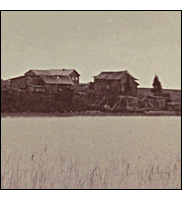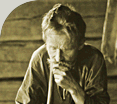 |
| Main page | Background | Villages | Revitalisation | Cultural tourism | Map | |
Tsena |
Tsena What to see Audio sample |
|
In the early 1800s, Tšena was inhabited by the Kettunen family. When Lönnrot went there for the first time, in 1833, the village had only four houses. The village patriarch, Tšena-Pekka, Pietari Kettunen, had died three or four years earlier, and Lönnrot failed to meet the other famous villager, Jyrki Kettunen, a cousin of the former. Poems had already been collected from both of these bards, however.
In the account of his fourth field trip, Lönnrot wrote the following about Pietari Kettunen's talents:
"Old Mari", as Lönnrot calls Perttunen's widow, had two daughters who were married to men in Vuonninen. One of the daughters, Miina, was mistress of the Teppola household; the other was the daughter-in-law of Ontrei Malinen. It was through these relations that Lönnrot ended up going to Vuonninen to meet bards who would figure significantly in the composition of the Kalevala. On his fifth field trip, Lönnrot met Jyrki Kettunen in Tšena
and recorded a number of poems sung by him over the next two days.
The poems provided by Jyrki Kettunen were included in the first edition of the Kalevala; those recorded from Pietari Kettunen were used in compiling the second edition, after Lönnrot had Sjögren's collections. Of the later poetry collectors, at least Genetz and Berner are known to have visited Tšena, and Inha photographed the village from the Köynäskoski Rapids. The village of Tšena, or Tšenaniemi, lies northwest of Vuokkiniemi on the shores of Lake Köynäsjärvi. By the end of the 19th century, the village had 23 houses and a population of over 100 persons. After the Second World War, the village was completely vacated. There was no need to liquidate it, since the authorities had not allowed anyone to return there after the war. In the southeast corner of the lake, about half a kilometer from the village, is a significant natural sight, Köynäskoski Rapids. The rapids roar in a step-wise cascade down into Lake Köynäsjärvi, which joins Lake Tšenajärvi to Lake Lammasjärvi, a link in turn to Viena's main artery, Lake Kuittijärvi. At its other end, Lake Tšenajärvi is connected to Lakes Venehjärvi and Latvajärvi.
|
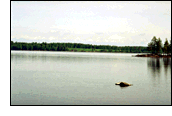 Tšena,
a small village some 5 km from Vuokkiniemi, is important to the
poetic tradition, but not solely for the lines of poetry collected
there. It was a resident of Tšena, Jyrki Kettunen, who led
the poetry collectors to Viena by singing long epic poems on his
trading trips to Finland. These songs were recorded and published
by Zacharias Topelius the Elder, who urged collectors to direct
their efforts towards the parish of Vuokkiniemi.
Tšena,
a small village some 5 km from Vuokkiniemi, is important to the
poetic tradition, but not solely for the lines of poetry collected
there. It was a resident of Tšena, Jyrki Kettunen, who led
the poetry collectors to Viena by singing long epic poems on his
trading trips to Finland. These songs were recorded and published
by Zacharias Topelius the Elder, who urged collectors to direct
their efforts towards the parish of Vuokkiniemi.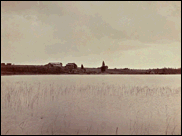
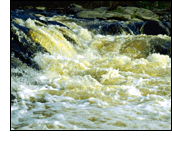 Pietari
had brought Mari back as his wife from Kiiminki on one of his trips
to Finland. She was Lönnrot's hostess when he visited Tšena,
and Lönnrot followed the family's history with interest in
the accounts of his travels. Lönnrot was moved by the fate
of this woman, who had come to Karelia from very different circumstances
in Finland, and sympathized with her a great deal.
Pietari
had brought Mari back as his wife from Kiiminki on one of his trips
to Finland. She was Lönnrot's hostess when he visited Tšena,
and Lönnrot followed the family's history with interest in
the accounts of his travels. Lönnrot was moved by the fate
of this woman, who had come to Karelia from very different circumstances
in Finland, and sympathized with her a great deal.
